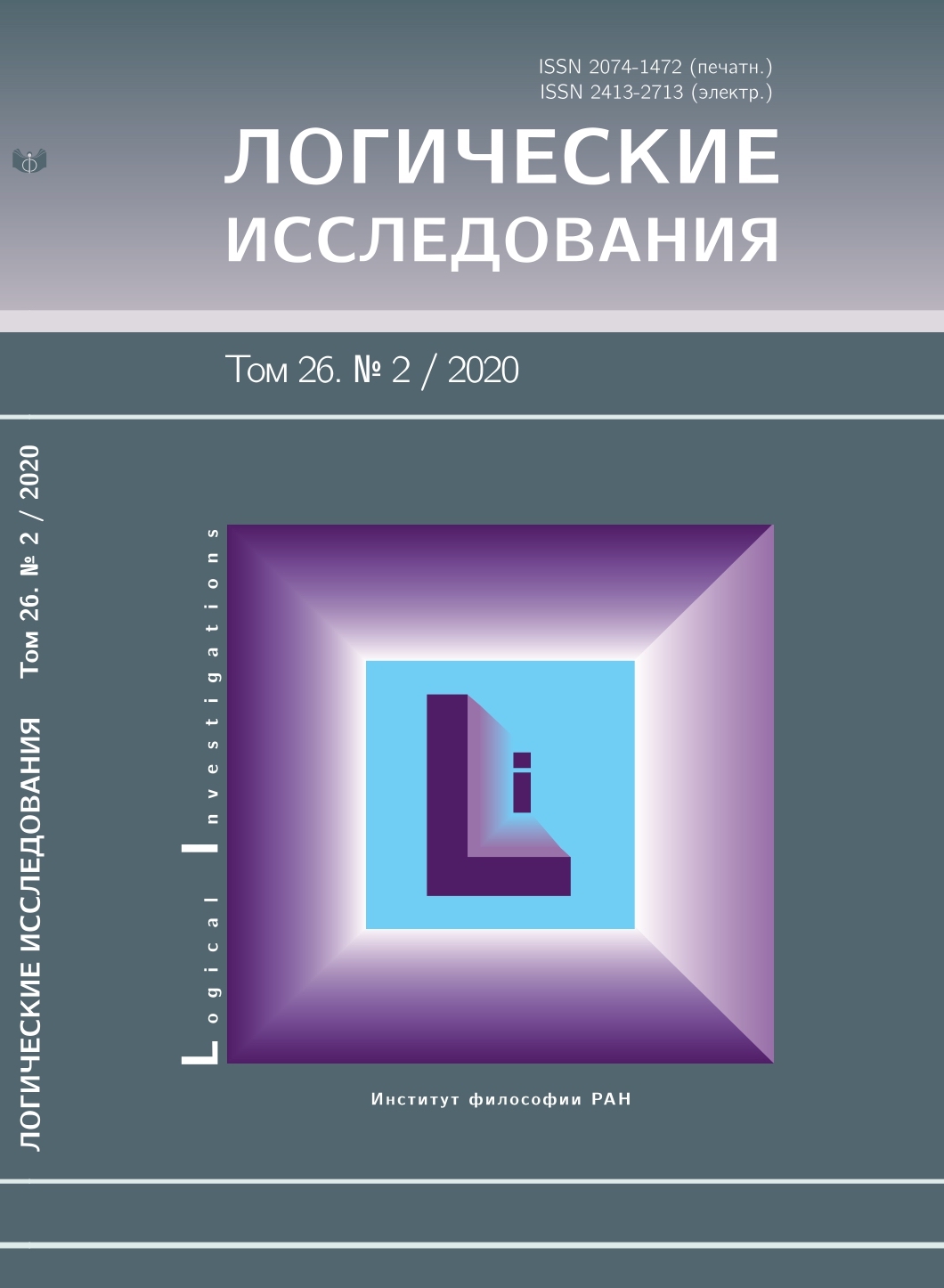Syllogistic as the logic of all relations between two non-empty sets
##plugins.themes.bootstrap3.article.main##
Abstract
In the paper we offer the language of positive syllogistic the alphabet of which contains all syllogistic constants. These constants are interpreted as the signs of different relationships between two non-empty sets (the extensions of general terms). Among these relationships we give accent to the relationships corresponding only to one from five Euler-Gergonne diagrams: (1) equality, (2) strict inclusion of the first set into the second, (3) strict inclusion of the second set into the first, (4) overlap, (5) exclusion. The other relationships can be represented as various combinations of Eulerian. Every constant $\textit{k}$ in the ‘universal’ syllogistic language is encoded with a sequence of numbers from 1 to 5 in accordance with the diagrams where the proposition of the form $\textit{SkP}$ is true. For example, the constant 12 represents the inclusion relationship of one non-empty set into another, the constant 1234 represents compatibility relationship between two non-empty sets.We formulate the set theoretical semantics based on the intuitive interpretation of syllogistic constants for this ‘universal’ syllogistic language.We introduce the notion of the definability of a syllogistic constant in a ‘local’ syllogistic language that contains only some of such constants, and the notion of the completeness of a set of initial constants in such a language. A constant $k$ is definable in a ‘local’ syllogistic language iff in the language there exists a formula $A$ that contains exactly two general terms $S$ and $P$, and $A$ is equivalent to the formula $SkP$ in the semantics of the ‘universal’ syllogistic language. A set of syllogistic constants $\{$k_1$, $k_2$,..., $k_m$\}$ is complete iff any syllogistic constant is definable in the ‘local’ language with the initial constants $k_1$, $k_2$,..., $k_m$. As an example, we demonstrate that the sets of the initial constants of traditional syllogistic ($\textit{a}$, $\textit{e}$, $\textit{i}$, $\textit{o}$) and Venn’s syllogistic (the signs of five Eulerian relationships) are complete.We construct the axiomatic calculus in the ‘universal’ syllogistic language and prove soundness and completeness metatheorems.
##plugins.generic.usageStats.downloads##
##plugins.themes.bootstrap3.article.details##
Copyright (c) 2020 Владимир Маркин

This work is licensed under a Creative Commons Attribution-NonCommercial 4.0 International License.
References
Дубаков, Маркин, 2007 – Дубаков Д.В., Маркин В.И. Система силлогистики с исходными константами, соответствующими круговым диаграммам // Труды научно-исследовательского семинара Логического центра Института философии РАН. Вып. XVIII. М.: ИФ РАН, 2007. С. 63–75.
Лукасевич, 1959 – Лукасевич Я. Аристотелевская силлогистика с точки зрения современной формальной логики. М.: Изд-во иностр. лит-ры, 1959. 313 с. Мчедлишвили, 1985 – Мчедлишвили Л.И. Реконструкция метода эктезиса и системы позитивной силлогисики // Логика Аристотеля. Материалы симпозиума. Тбилиси: Изд-во Тбилисского ун-та, 1985. С. 21–35.
Смирнов, 2002 – Смирнов В.А. Логические методы анализа научного знания. М.:Эдиториал УРСС, 2002. 263 с.
Venn, 1881 – VennJ. Symbolic Logic. London: Macmillan and Co., 1881. 446 p.
